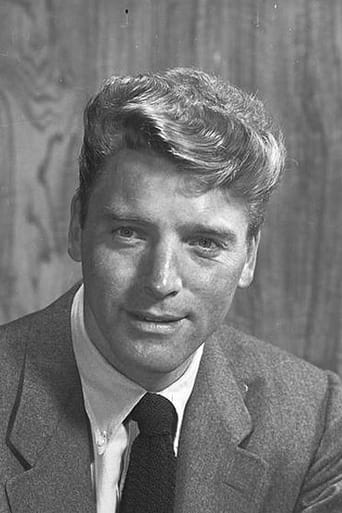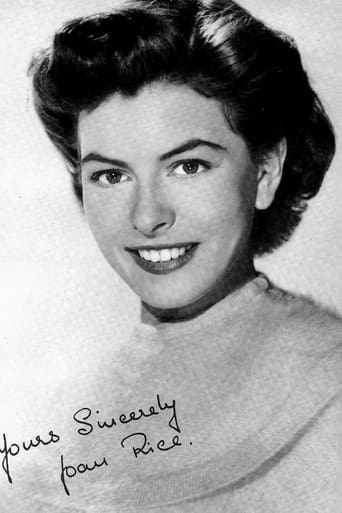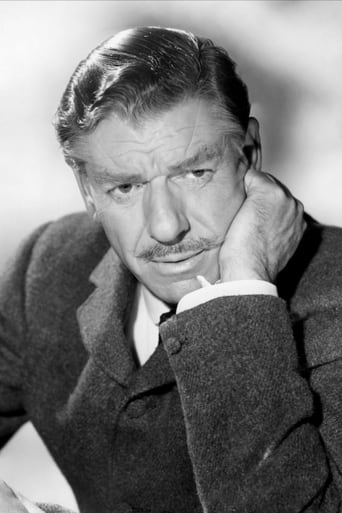Voxitype
Good films always raise compelling questions, whether the format is fiction or documentary fact.
Allison Davies
The film never slows down or bores, plunging from one harrowing sequence to the next.
Bob
This is one of the best movies I’ve seen in a very long time. You have to go and see this on the big screen.
ma-cortes
This is an amusing and fun movie , although heavily Hollywoodized, the film is based on real individuals and events . Here Burt Lancaster is the complete show , he played this adventure movie in the wake of his man-of-action epoch when he performed three magnificent movies that included ¨Crimson pirate¨ , ¨The Flame and the Arrow¨ and this one . Based on a real-life American adventurer , a Yankee sea captain who has adventures in paradise trying to become an entrepreneur in Micronesia. The entire picture was photographed in the South Pacific , where for years the basic economy and wealth revolved around the dried meat of coconut , known as Copra . And in the Island of Yap the natives worshipped an exotic sacred stone they called ¨Fei¨. It deals with Lancaster's attempts to make fame and fortune out of pearls or anything else he can lay his hands on , when he's not fighting gangs of pirates , he then became involved into the lucrative coconut-oil trade of the mid-1800s . There the disgruntled natives see him as a god and allow him to marry a charming maiden . When his kingdom is threatened by unscrupulous German traders , Burt springs into action to safeguard his kingdom .Agreeable as well as entertaining adventure movie , plenty of action , thrills , bright cinematography and exotic scenarios . Although the story has been told before , tight filmmaking and nice acting win out . The picture is fast-moving , exciting and thrilling ; however the scenic qualities of the movie are rather better than the disjointed screenplay by Borden Chase and James Hill , being suggested by a novel from Lawrence Klingman and Gerald Green . ¨His Majesty O'Keefe¨ results to be one of Lancaster's swashbuckling best and has achieved a good status along with ¨Crimson pirate¨(1952) and ¨The Flame and the Arrow¨(1950) , all of them made during star Burt Lancaster's athletic and swashbuckler period . Because of cost overruns on "The Crimson Pirate" and "His Majesty O'Keefe," Warner Brothers insisted that future films from Hecht/Lancaster be limited to $900,000 ; then Lancaster and Hecht's response was to strike a new deal with United Artists. The cast is frankly well such as Andre Morell as a friendly trader , Abraham Sofaer as a medicine man and a gorgeous young Joan Rice . The producers , the notorious team formed by Harold Hecht-James Hill-Lancaster wish to acknowledge their gratitude to the Secretary for Fijian Affairs , to Ratu Penaia La La Latiamara , Serua District Chief in Charge and to the wonderful people of the Fiji Islands . Colorful cinematography shot on location by Otto Heller , this was the first film ever filmed in the Fiji Islands . Lively and atmospheric musical score composed by the classic Dimitri Tiomkin , though the British print has a Robert Farnon score conducted by Louis Levy, re-scored in Hollywood by Dimitri . Lavishly produced and being professionally directed by Byron Haskin , though with no originality . Haskin was a good craftsman who worked in Warner Brothers Special Effects department . He returned to filmmaking , and was responsible for Walt Disney's first live-action film , the adventure cult-classic Treasure island (1950). In the mid-1950s Haskin began a rewarding association with producer George Pal, for whom he filmed what are probably his best-known films , the science fiction classic War of the worlds (1953) , Conquest of space (1955) and a catastrophe movie , The naked jungle (1954). Haskin was expert on Sci-Fi genre , as he would collaborate with Pal on other films , such as From the earth to moon , Robinson Crusoe on Mars (1964) and The power (1968). He also directed some Western as Denver Rio Grande and Silver City and especially adventure movie such as Treasure Island (1950) , Long John Silver (1954) , Captain Sinbad (1963) and this His Majesty O'Keefe (1954) .
James Hitchcock
Captain David O'Keefe was a real-life person, a 19th century Irish-born adventurer from Savannah, Georgia, who made his fortune in the copra trade on the South Pacific island of Yap. This film is a fictionalised version of his life-story, and as one might expect takes a few liberties with history. In the film O'Keefe becomes king of Yap and defends his people against the incursions of aggressive German colonisers. In reality, when O'Keefe arrived on the island in 1871 it was a Spanish colony and the newly-united German Empire had no interest in acquiring colonies in the South Pacific or anywhere else. Yap did not become German until 1899, well after the date at which the film is set. This change was possibly made because in 1954, only nine years after the end of the war, American audiences would have been more accustomed to seeing Germans than Spaniards as cinematic villains. The film does, however, provide one "good German" in the shape of O'Keefe's friend Alfred Tetens, another real-life person. O'Keefe did indeed marry a local girl as shown here, but the film tactfully omits the fact that their marriage was invalid because he already had a wife in Savannah. The Production Code officially forbade the depiction of racially mixed marriages or romances, but by the fifties there seemed to be an unofficial relaxation of this rule in force. Relationships between white men and non-white women could be shown provided (a) the girl was described as being of mixed race and (b) she was played by a white actress. This rule was applied in "Showboat" and "Love is a Many-Splendoured Thing", and is also applied here. O'Keefe's sweetheart Dalabo, supposedly of mixed European and Micronesian descent, is played by the Derbyshire-born Joan Rice. Dalabo has a rival for O'Keefe's affections, but the said rival, being pure- blooded Yapese, has to lose out. Rice, although undoubtedly decorative to look at, is never really convincing as a native of the South Seas, or for that matter of any part of the world further south than Derbyshire. Burt Lancaster, however, makes an agreeable hero, and receives good support from André Morell as Tetens. Later in his career Lancaster could be a very intense actor, often appearing in dramas with a serious social, political or philosophical purpose, but in his action films of the early fifties his style of acting was generally much more relaxed, and so it is here. Many film-makers of the early days of the cinema were reluctant to venture too far away from a Hollywood studio, even when their films were ostensibly set in some exotic part of the globe. This attitude still prevailed in some quarters during the fifties; for example "Brigadoon", also made in 1954, had to be shot on MGM's sound stage, against a vast painted backdrop of Scottish-style scenery, because Dore Schary was reluctant to stump up the cost of transporting cast and crew all the way to Scotland, or even to some part of America that looked like Scotland. In other quarters, however, attitudes were changing as the studios began to realise that local colour and authentic scenery could be useful weapons in their battle against the new enemy, television. "His Majesty O'Keefe" is a case in point, as much of the film was actually shot on location in the South Pacific. This doubtless increased the budget, but I think that the decision was the right one, as the result was a colourful, visually attractive film. Byron Haskin is unlikely to feature very highly on any list of Hollywood's great auteurs, but he was capable of producing some very decent and enjoyable adventure films (his 1953 version of "The War of the Worlds" is probably the best known) and this is another in that category. 7/10
MARIO GAUCI
The last of Burt Lancaster's adventurous star vehicles is easily the weakest: bland, dreary and unmemorable yet contriving to be a colorful and pleasant diversion nevertheless; apparently, he plays an actual larger-than-life adventurer who became the ruler of a Fijian island. Andre' Morell and Abraham Sofaer round up a rather unremarkable cast as a German trading agent and the native (and benign for once) witch doctor.The film has an excessive quota of local color via a succession of tedious native ceremonies but only a handful of the expected action sequences – although, what little there is, is adequately enough staged (including a hand-to-hand combat between Lancaster and a rebellious native chieftain who eventually comes to accept O'Keefe as his sovereign). An unusual element to the narrative which is, however, never brought to fruition is the native's reverence for a local stone they call "Fei". Needless to say, the strapping (and frequently bare-chested) Lancaster turns the girls' heads wherever he goes – in particular that of an Afro-sporting native girl and his future wife, Asian Joan Rice.The film was released on DVD by Warners as part of a rather undistinguished "Burt Lancaster Signature Collection" but I still intend to get my hands on the rest of them in the future; for the record, I already have the best of this bunch i.e. Jacques Tourneur's THE FLAME AND THE ARROW (1950).
Robert J. Maxwell
Rowdy, masculine, adventurer David O'Keefe (Lancaster) sees millions of dollars of copra ready to be harvested from the coconuts on Yap, a South Sea Island. The local representative of a German trading company (Andre Morell) is sympathetic but hopeless: the "natives" are too lazy to work because they already have everything they want, and money is not among the things they want. Lancaster finally finds out what motivates the natives to work -- "fei." It's a kind of local currency, but it's stone, harvested from a distant island and involving a dangerous voyage to and fro. Using dynamite instead of hand picks, Lancaster brings them more fei than they can eat, and the Yapese elect him king. He and his supporters defeat incursions by Bully Hays and the German trading company (at the cost of Morrell's life) and he marries a Caucasian girl and everyone lives happily ever after.It's a bully movie, full of the kind of raw capitalism that produced Diamond Jim Brady and the Gilded Age of McKinley and colonialism generally. It's marvelous seeing Lancaster do his own stunts. And Joan Rice is a perfect innocent virgin.Lancaster has a tooth damaged in a fist fight with Bully Hayes. He is taken to a Chinese dentist and is asked whether he'd like expensive gold, that will last longer, or cheap tin. "Tin," replies Lancaster in the dentist's chair, "and drive it in to last." Most of us wouldn't have said that. The film was shot in the 1950s in Fiji, in Melanesia, not in Yap, in Micronesia. There are physical differences between the populations, but it doesn't affect the fun of the movie.Lancaster was never more fit than here. He bounces around with his Hollywood-shaved pectorals, and defeats every physical challenge. It's only the moral questions that finally leave him nonplussed.I saw this in Elizabeth, New Jersey, as a school kid with my date, and she translated the German for me. Now, after having spent two years studying the natives on a Polynesian Island as an anthropologist, I can follow the native language about as well as Eleanor followed the few words of German. What curious twists Clio, the muse of history, provides us.For what it's worth, the story of fei is real. Fei was valuable for the same reason that gold (or any other mineral or gem) is valuable. It's hard to get. You had to work like nobody's business to find some. It's called the "value added" theory of goods. You add value to some commodity because of the labor that has gone into the getting of it, as Freidrich Engels and others have pointed out. (Fresh air is worthless because no value had been added to it, so nobody charges you to breathe. Compressed air at the gas station costs money because it has been worked on.) Fei is made of stone. On Yap, in real life, a boat with some fei was sunk offshore, but the fei was not lost. Since everyone knew it was out there, although at the bottom of the ocean, it was still used as currency. Well -- why not? Is it that much different from our printing more Treasury bonds when WE need money? Just substitute paper for stone. The danger illustrated in this movie is that if you use modern mining methods to collect fei, you get too much of it and it becomes worth less. Ditto for printing too much money. How did I fall into this disquisition? End of confusing economics lesson.This is something more than just another action flick in an exotic setting. It puts Lancaster in something of a dilemma. Which is more important -- profit or social responsibility? The question has resonance.




